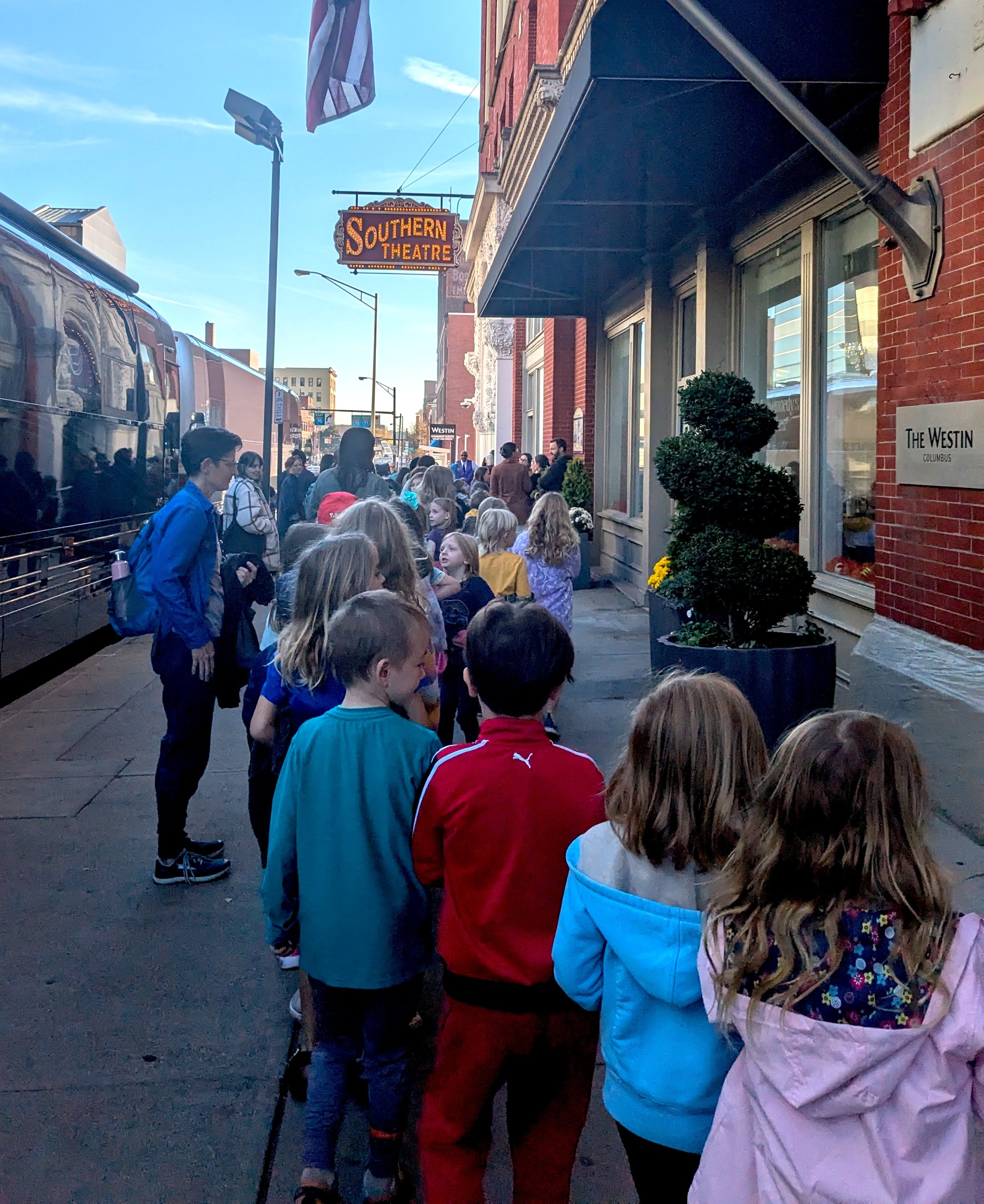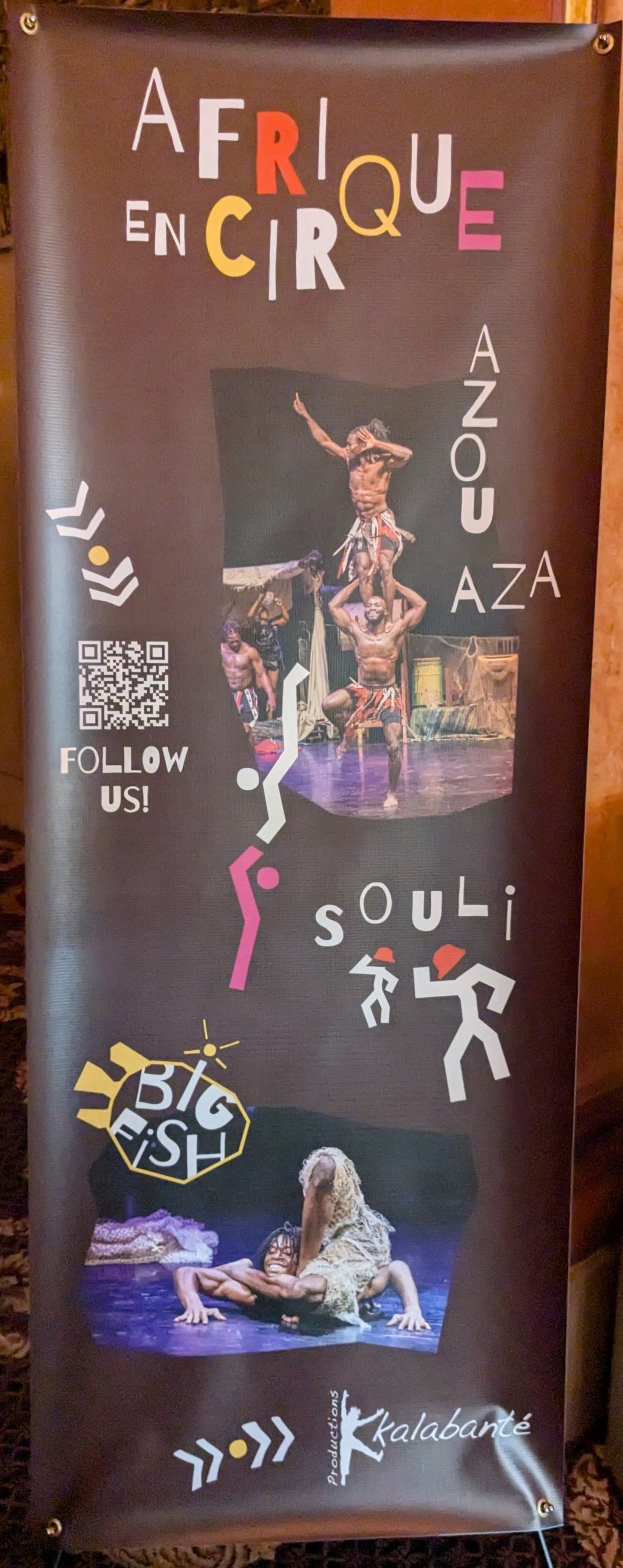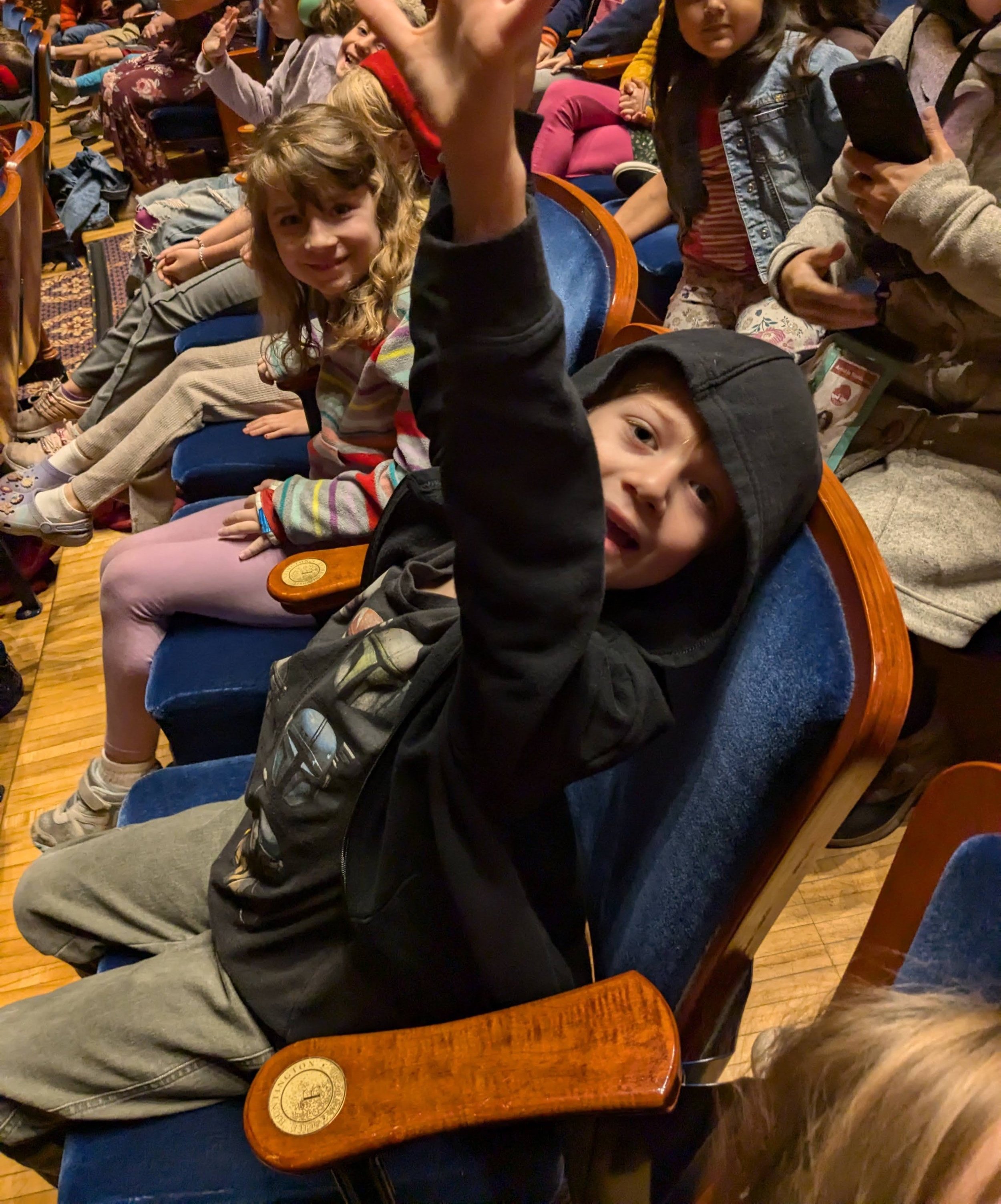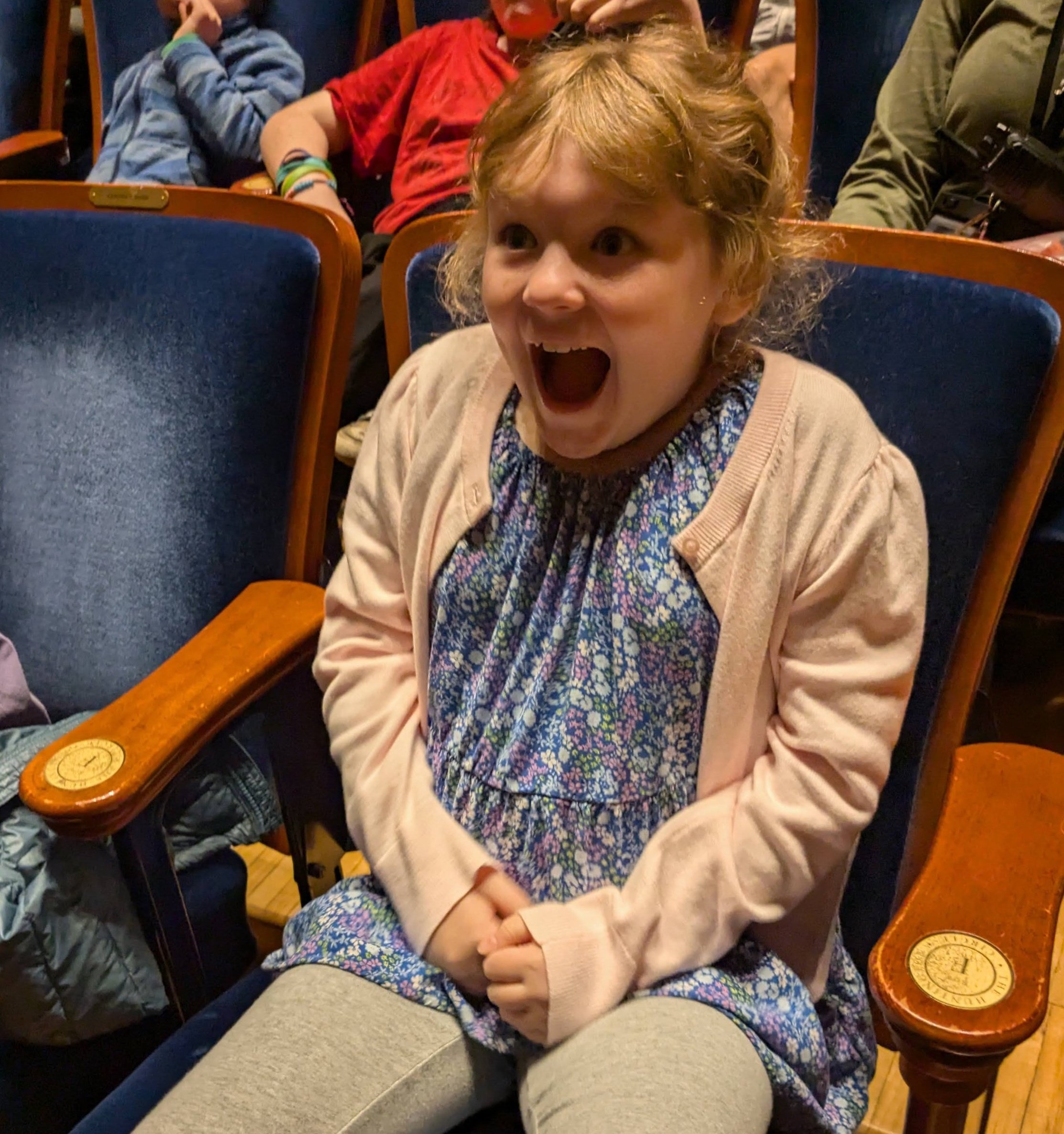Cirque Kalabanté
When the large drums started beating, four in total, I could feel the sound in my chest. I instantly looked to see how the kids from ROCS were responding. One, two…five, six…I counted ten (there were probably more) steady with their headphones on, while others who didn’t have them (or forgot to bring them) sat holding their ears. But the drums only lasted a few minutes, and what came next, and all that followed was ultra-stimulating, and all encompassing. The international Cirque Kalabanté was a journey for the body and the soul.
The opening of Cirque Kalabanté involves the creator, Yamoussa Bangoura, explaining that he would be taking us to his fish town in West Africa. The entire circus is set there, in Guinea, where the inhabitants perform amazing feats of acrobatics, unbelievable contortions, lively dancing, and more.
Bangora, for example, played the kora, a 21 stringed instrument that falls somewhere between a harp and a lute. It’s huge and beautiful and was quite impressive as he carried it back to his seat in the “village.” Later, Bangora danced to Afro-Jazz with a giant hula-hoop called a Cyr wheel. It was spell bounding, and I could hear the “oohs” and “aahs” (albeit this was a constant accompaniment throughout the show) as he turned faster and faster in circles. There was also the very amusing moment when Kali (ROCS teacher) was thrown a juggling pin, and Bangora asked her to throw it back. Twice.
But it wasn’t just Bangora that interacted with the audience. All the performances turned their attention to their wide-eyed friends. Even more than their beautiful costumes, I was struck by their balance of emotions: the seriousness in their faces as they sometimes danced and moved, with the playfulness of their smiles when they would complete a feat. They eagerly taught the children words in their language, songs they could contribute to, and a beat that carried the energy of the room. Their tag line: “If you can walk, you can dance! If you can talk, you can sing!” was an invitation to show their inclusiveness. They took the audience to their home and shared so much, and so joyfully.
Cirque Kalabanté is part of CAPA’s Social Justice Series, under their Passport to Learning program. This program aims to bring school age children to Columbus’ theatres for unique and educational experiences. The Social Justice Series, which aligns with ROCS social justice part of the curriculum, commits to fighting systemic racism by providing opportunities for students to hear, experience, and explore issues “through the perspectives of a range of outstanding artists of color” (“Social Justice Series”, 2024). Last year, ROCS took part in two other performances under this series: Harriet Tubman: Straight Outta’ the Underground, and Havanna Hop: A Children’s take of Confidence and Identity.
Cirque Kalabanté aims to bring West Africa to the audience – the sounds, the people, the culture. It also shows the importance of discipline and courage, trust and transparency, all aspects needed to have a show based on the constant interaction of its performers. If you’re interested in incorporating this learning into your homeschool curriculum, check out their curriculum connections and teaching materials here!
What the students got from the performance is not quantifiable. I know, for example, that thoughts about Africa were brewing in the minds of some of these students, as one whispered questions to me between sets. I know some were thinking about their own abilities and what they wish they could (or someday might!) do as I had to gently remind them not to talk during the performance. I know most of all, that when the music played and they were up dancing around it was for no other reason than they had been possessed by the magnificence of Africa.
-Celeste Irving, ROCS mom




